How Do You Draw a Tree D Square
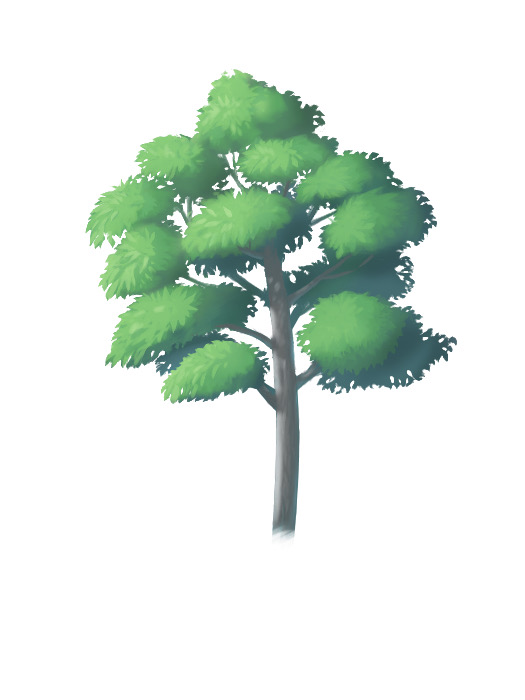
Trees, such as street trees and forests, are some of the most common items to appear in the background.
In this article, I'll explain how to draw such trees.
In "How to draw a tree", I showed you how to draw the base and leaves.
If you want to know how to draw the leaf part from the base, please refer to "How to draw a tree" , and if you are looking for how to draw the "wood grain" of a desk or chair, please refer to "How to draw the wood grain".
1. Shape the substrate
In the previous "How to Draw a Tree 1", we roughly drew the groundwork.
So, let's start by shaping the groundwork while looking at the overall balance.
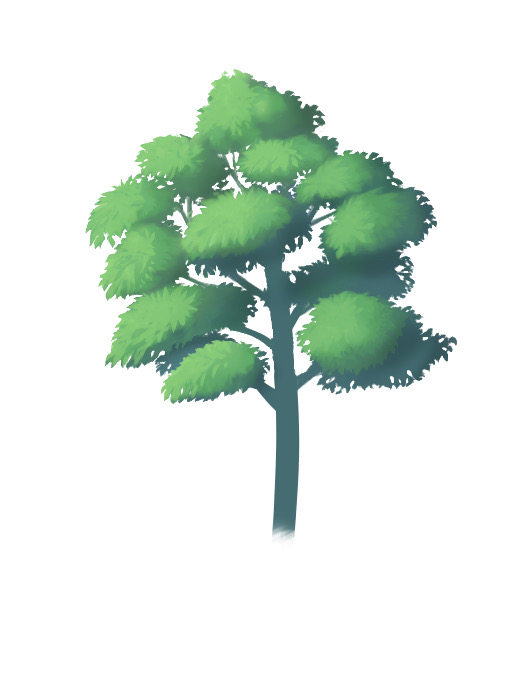
Trees become thinner the closer they get to the ends of the branches from the roots.
If the branches are thicker at the end of the branch, the tree will be unbalanced, so if the branches are thicker, this is where you can make adjustments.
2. Draw the shade of the trunk
Once you've prepared the groundwork, it's time to draw the shade of the trunk.
When painting the shade of the trunk, you need to pay attention to the shape of the trunk.
The trunk is cylindrical, so paint it round, not flat.
[Cylindrical shading]
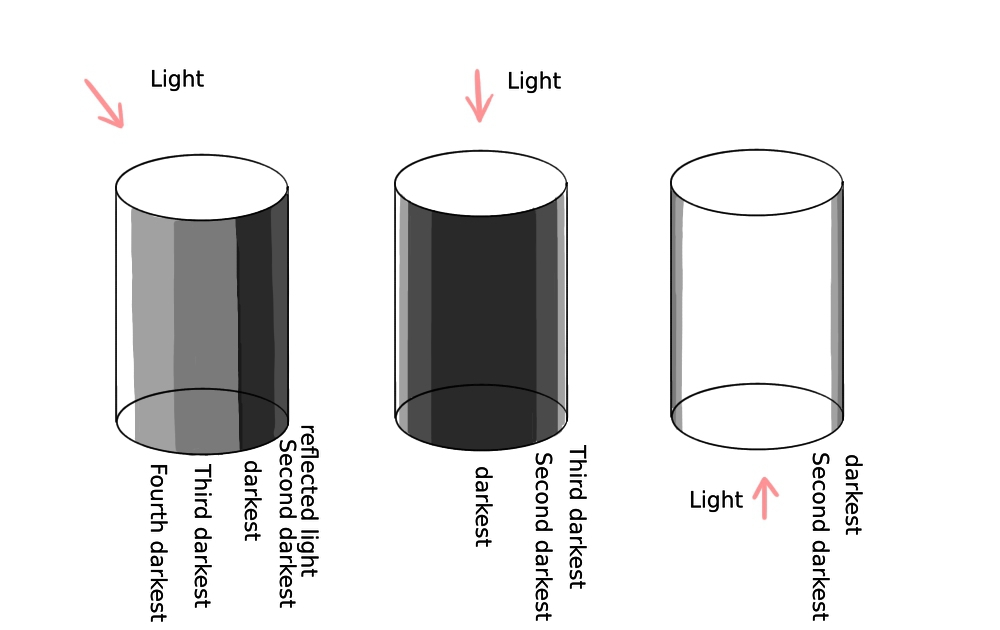
Cylindrical shadows can be divided into three patterns as shown in the picture above, depending on the position of the light source.
When you want to draw the tree trunk well, it is useful to keep this kind of shadowing in mind.
In the picture above, I have drawn the shadow by deforming it exaggeratedly so that it is easy to understand.
Therefore, when you actually draw the picture as an illustration, you need to use an airbrush to blur the connection or adjust the brightness well.
In this case, the light source is in the upper left corner of the image, so I use the leftmost type as a reference.
Here, I would like to lump the third and fourth darkest areas together and paint them a little more easily as follows.
The darkest part: the shadow part of the base that I just painted.
The third darkest area + the fourth darkest area: slightly brighter area
The second darkest area: the right-most reflected light
The brightest part: the leftmost lighted area
The image is that the left side is the brightest and the right side is the darkest, and the right side is the most reflective light.
Now let's take a look at the steps in order.
(1) Paint the darkest part
The first step is to paint the darkest part of the shadow.
When it comes to the color of the trunk, it's tempting to choose a light brown color, but the actual tree is almost a gray color.
Therefore, I will choose a color close to gray to paint it here.
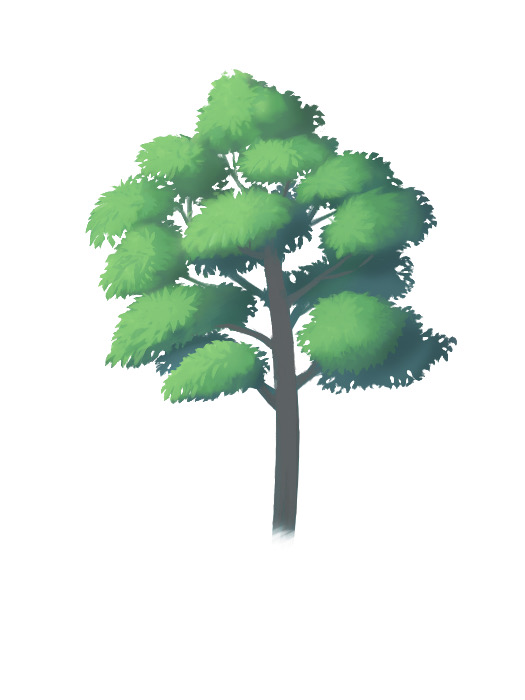
Creating a new layer on top of the primer and clipping it makes it easier to paint cleanly because it won't stick out of the primer.
(2) Paint the third darkest part
Once the darkest part has been painted, it is time to paint the third darkest part (in the picture above, the third and fourth darkest parts).
Painting the third darkest area makes it easier to show the unevenness of the surface of the wood, so paint the third darkest area while keeping in mind the vertical line.
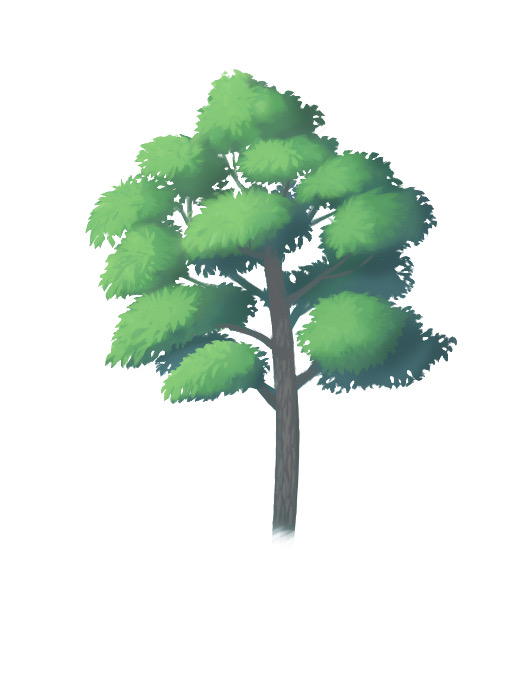
Here, I'm using an acrylic brush and choosing a slightly lighter color than I did earlier.
The lightest part is the convex part.
Next, we apply the color so that the shadow of the convex part is a little brighter than the part in ①.
This time, I made a new layer at the top and painted the same color in a solid color and adjusted the transparency to blend the color a little.
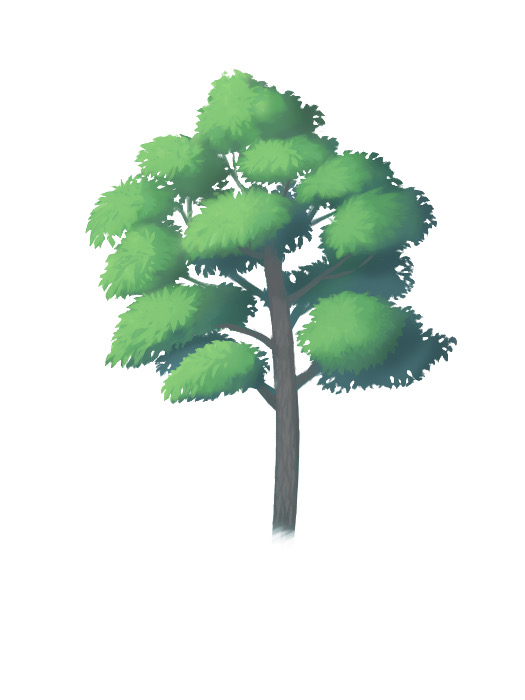
(3) Paint the brightest color
Next, let's add the lightest color to the left side.
Here, I'm creating a new layer at the top, painting the white with the airbrush and then reducing the transparency a bit.
There will be a shadow where there is a branch on the left side, so once the white is painted on, I'll use the airbrush's "transparency" color to shave off a little bit of the area next to the branch.
[How to choose a transparent color]
Pen Tools > Select the brush of your choice > Click on the "plaid square" above the color chart.
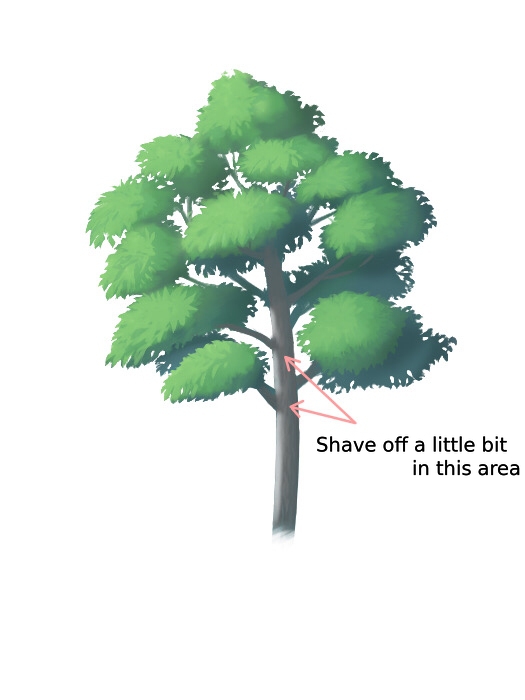
The width of the "third darkest part" that I drew in (2) was a little too wide, so I shaved off a little bit at this point to adjust it.
Now I was able to draw the shadows of the trees.
(4) Putting in the reflected light
The shadows I've drawn so far are fine, but if you want to make it look more three-dimensional, I recommend adding "reflected light".
Reflected light is the light that hits the ground and bounces off the ground and so on, so I suggest adding a little bit of reflected light on the lower side of the branch in addition to the right side of the trunk.
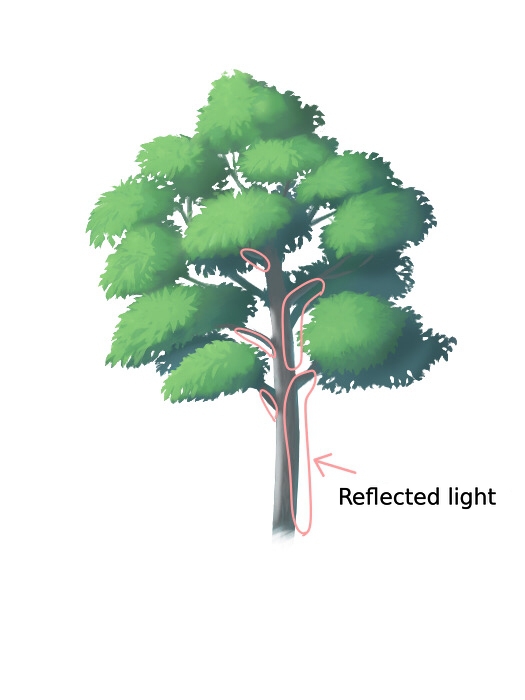
In this case, I created a new layer first and clipped it, then airbrushed the reflected light and adjusted the transparency.
5 Painting the sunshine through the trees
Once the reflected light is added, we will add the light from the sunlight through the trees at the end.
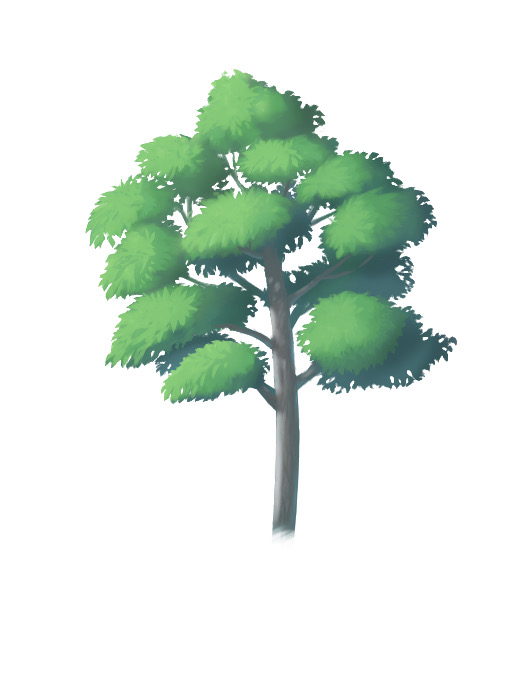
First, create a new layer at the top, and use the same procedure as for the lightest part, letting the light coming from between the leaves enter the trunk area.
At the same time, we add a little more light to the higher, uneven area of the trunk to adjust it.
3. Adjust by looking at the overall balance
Finally, adjust the overall balance by adding branches to the missing parts, or adding brighter parts of the leaves.
Once you have made these adjustments, you are done.
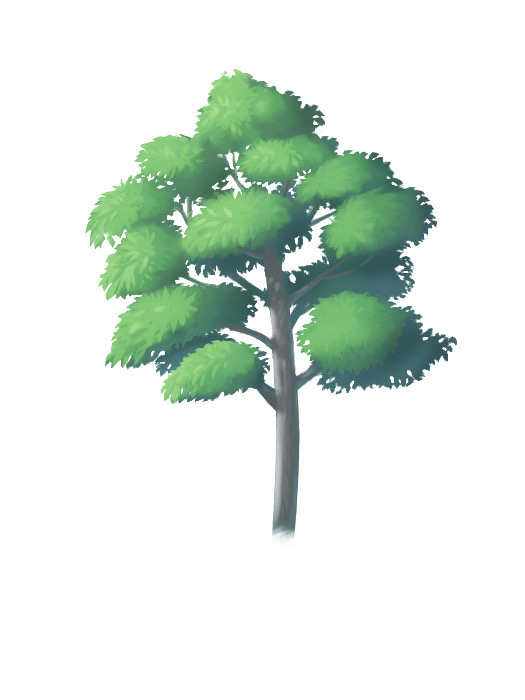
4. Summary
It's easy to draw a tree that you are used to seeing in everyday life, and it's easy to draw it in your imagination.
However, when we do so, it is easy to get confused when we draw the shape of the tree in our imagination or when we do not understand the details.
It is recommended that you prepare a picture of the tree to refer to when you draw the tree, because you will be able to draw it by observing the color and shape of the real thing.
If you can draw a tree, you can expand the range of backgrounds and illustrations, so we encourage you to give it a try.
Source: https://medibangpaint.com/en/use/2020/07/how-to-draw-tree-2/
0 Response to "How Do You Draw a Tree D Square"
Post a Comment